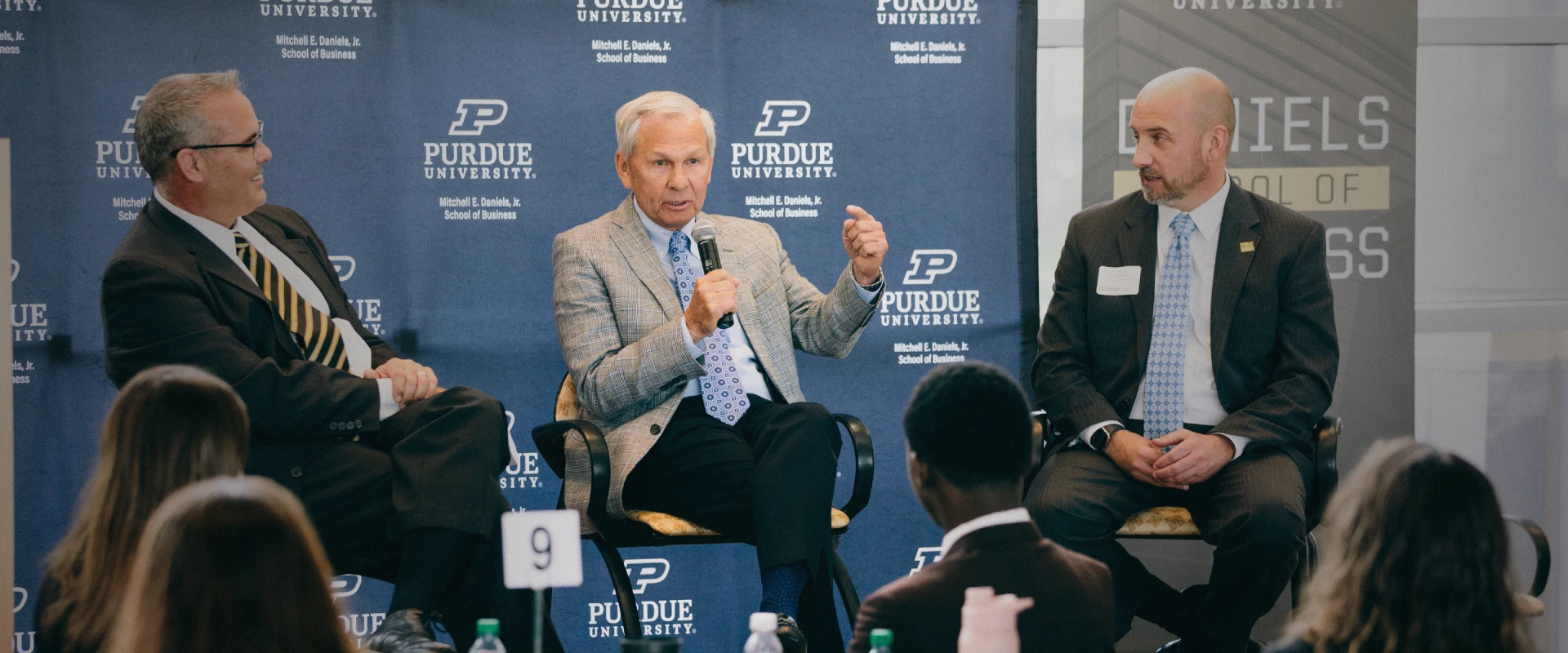
03-31-2025
As president, CEO and chairman of Goodrich Co., Purdue alumnus Marshall Larsen successfully steered the aerospace company through periods of growth as well as economic downturns. In a recent discussion with students in the Larsen Leaders Academy, he offered insights into his executive-level decisions.
After the events of 9/11, which forced him to lay off 20% of his workforce—around 5,000 people—Larsen vowed never to face such drastic cuts again. Recognizing the unpredictable nature of major disruptions, he closely monitored the aerospace industry’s business cycles. By 2008, after years of steady growth, he sensed a potential downturn despite no immediate signs.
In an unexpected move, he told his top leaders to halt hiring, even though it seemed counterintuitive. When the financial crisis hit later that year, the decision paid off. Unlike many companies, they avoided mass layoffs. In his words, it was “the right decision for the wrong reason,” highlighting the importance of proactive, cycle-aware leadership.
In his time at Goodrich, Larsen also faced the decision to offshore some production to Mexico, which he defended by stating that it would not result in a layoff of domestic workers. Instead, he adopted Japan’s Kaizen manufacturing method, which involved cutting waste and reducing travel time and labor. This approach allowed Goodrich to maintain growth without losing jobs in a down economy. Larsen said that was key to keeping people employed and meeting cash flow objectives in the post-GFC era, which refers to the time after the 2008 financial crisis.
“Maintaining integrity and executing a strategic plan are crucial even when faced with such challenges,” he said. “Transition planning for leadership development in a large company can be challenging, but it is essential to find the right people and balance the need for strategic roles with the potential for success.”
In addition, Larsen shared his experience with the acquisition of Goodrich by United Technologies Corporation (UTC). He met with UTC’s CEO, who offered $90 per share to purchase the company. The Goodrich board weighed UTC’s offer against the management team’s ability to develop significantly greater value over five years.
“We didn’t want to sell our company, but we had a fiduciary duty to do what benefits our shareholders,” Larsen said. Despite Goodrich initially rejecting the offer, UTC eventually agreed to raise the price to $127.50 a share.
In July 2012, UTC formally acquired Goodrich, which was combined with Hamilton Sundstrand to create the UTC Aerospace Systems business unit. “The negotiations were tumultuous,” said Larsen. Although he was offered a leadership position in the new division, Larsen chose to join the UTC board of directors instead.
Larsen also discussed the importance of hiring trustworthy investment bankers during the acquisition process. “A good banker helps align incentives, drive up the price as high as possible, and assist the board’s decision process,” he said. “It’s also important to develop trust and build relationships with all the parties involved, which helps ensure that the deal is done for the best possible outcome.”